Tarantula Care Sheet Top 5 Secrets
Embarking on the journey of tarantula ownership can be incredibly rewarding. These fascinating creatures, with their unique behaviors and striking appearances, make captivating pets. However, successful tarantula keeping requires a commitment to understanding their specific needs. This care sheet reveals the top 5 secrets to providing a thriving environment for your eight-legged friend, ensuring their health, happiness, and longevity. From selecting the right species to maintaining their enclosure, these secrets will guide you through the essential aspects of tarantula care. Proper care not only allows your tarantula to thrive but also provides you with an opportunity to observe their behavior and learn more about the intricate world of arachnids. Remember, responsible pet ownership is key, and this sheet is designed to help you become a knowledgeable and caring tarantula keeper.
Secret 1: Choosing the Right Tarantula
The foundation of successful tarantula keeping lies in selecting the right species for your experience level and lifestyle. Not all tarantulas are created equal; some are docile and easy to handle, while others are more defensive and require a higher level of expertise. Researching various species is essential before bringing one home. Consider factors like temperament, size, venom potency, and care requirements. Some beginner-friendly species include the Chilean Rose Hair (Grammostola rosea), the Mexican Red Knee (Brachypelma hamorii), and the Pinktoe tarantula (Avicularia avicularia). These species tend to be relatively docile and have less potent venom, making them suitable for those new to the hobby. Be sure to carefully evaluate your experience level before making a choice.
Understanding Different Tarantula Species
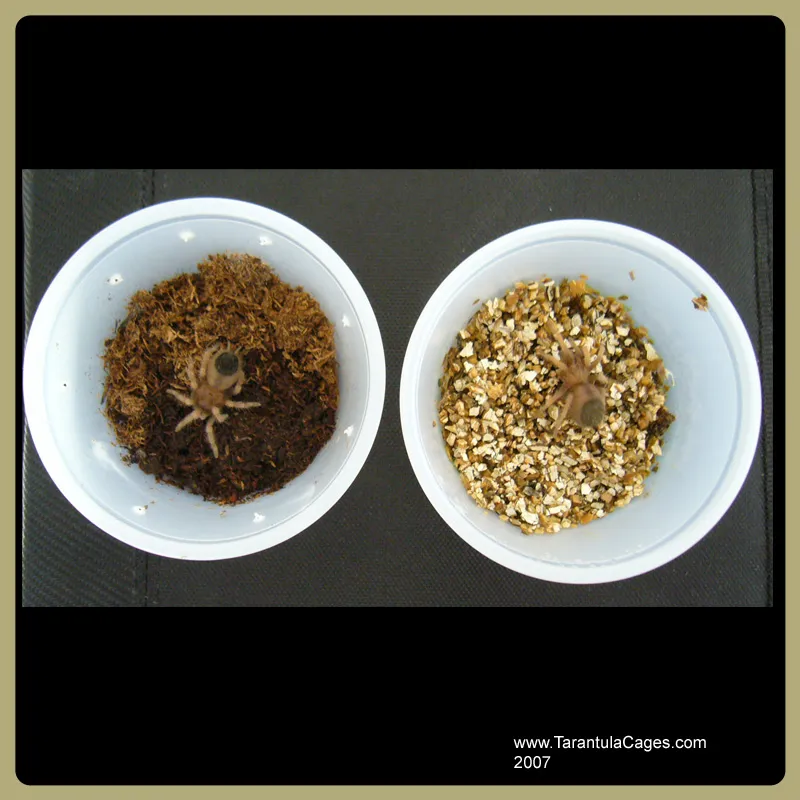
Tarantulas come in a remarkable variety of species, each with its own unique characteristics. Some are terrestrial, spending their lives on the ground, while others are arboreal, preferring to live in trees. Their size, coloration, and behavior vary widely. For example, the Goliath Birdeater (Theraphosa blondi) is one of the largest tarantulas in the world, while others are much smaller. Understanding these differences is crucial for providing appropriate care. Arboreal species require taller enclosures with climbing opportunities, while terrestrial species need more floor space. Certain species are known for being more defensive or having specific humidity and temperature requirements. Researching the specific needs of your chosen species is essential for their well-being.
Researching Species-Specific Needs
Once you’ve selected a species, delve into detailed research about its specific needs. This includes its natural habitat, preferred temperature and humidity ranges, dietary requirements, and potential health issues. Reliable sources of information include reputable online forums, books dedicated to tarantula care, and experienced keepers. Look for information on the ideal substrate for the species, the appropriate size and type of enclosure, and the frequency of feeding. Understanding the species’ behavior can also help you anticipate its needs and provide a stimulating environment. For instance, some species are known for burrowing, so providing a deep layer of substrate is essential. The more you know about your tarantula, the better equipped you will be to provide it with the best possible care.
Secret 2: Setting Up the Perfect Habitat
Creating a suitable habitat is crucial for your tarantula’s well-being. The enclosure should mimic their natural environment as closely as possible, providing a sense of security and promoting natural behaviors. A well-designed habitat will not only keep your tarantula healthy but also allow you to observe its fascinating behaviors. The key components of a perfect habitat include a proper enclosure, appropriate substrate, and careful control of temperature and humidity. The specific requirements vary depending on the species, so always research the specific needs of your chosen tarantula before setting up its home. With the correct setup, your tarantula can thrive, showcasing its unique characteristics and making it a captivating pet.
Choosing the Right Enclosure
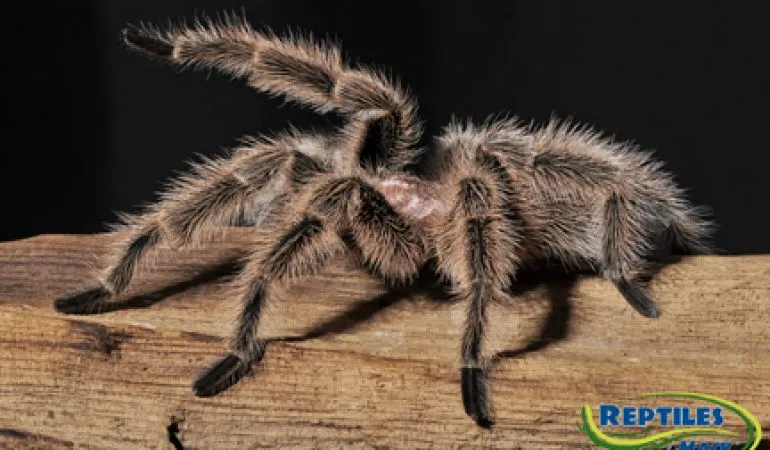
The enclosure is the foundation of your tarantula’s habitat, providing shelter and security. The size and type of enclosure depend on the species and its adult size. Generally, a good rule of thumb is to provide an enclosure that is at least three times the tarantula’s leg span in width and length. For terrestrial species, a wider enclosure is preferable, while arboreal species need a taller enclosure. The enclosure should have a secure lid to prevent escapes and be made of a material that is easy to clean, such as glass or acrylic. Ventilation is also essential, so make sure the enclosure has adequate airflow. Ensure the enclosure is placed in a location away from direct sunlight and drafts to help regulate temperature and humidity.
Substrate Selection and Depth
The substrate serves as the flooring of your tarantula’s enclosure, providing a place to burrow, hide, and maintain humidity. The type of substrate you choose should be appropriate for the species. For terrestrial species, a substrate like peat moss, coconut fiber, or a mix of both is ideal. Arboreal species often prefer a substrate that holds more moisture, such as a mix of coco fiber and sphagnum moss. The depth of the substrate is also important; terrestrial species often appreciate a substrate depth that allows them to burrow. A good depth for terrestrial species is usually two to four inches, or even more for larger tarantulas. Change the substrate regularly to maintain a healthy environment and prevent the buildup of waste and mold. Proper substrate selection is one of the most important aspects of tarantula care.
Temperature and Humidity Control
Tarantulas are ectothermic, meaning they rely on their environment to regulate their body temperature. Maintaining the correct temperature and humidity levels is crucial for their health and well-being. The ideal temperature range for most tarantulas is between 75 and 85 degrees Fahrenheit. You can use a heat lamp or a heat mat to achieve this, but always monitor the temperature carefully to prevent overheating. Humidity requirements vary depending on the species; some species thrive in drier environments, while others need higher humidity levels. Use a hygrometer to monitor humidity levels, and adjust ventilation and misting as needed. Providing a water dish with fresh water is also essential for hydration. Consistent monitoring and adjustments are essential to create the perfect environment.
Secret 3: Feeding Your Tarantula
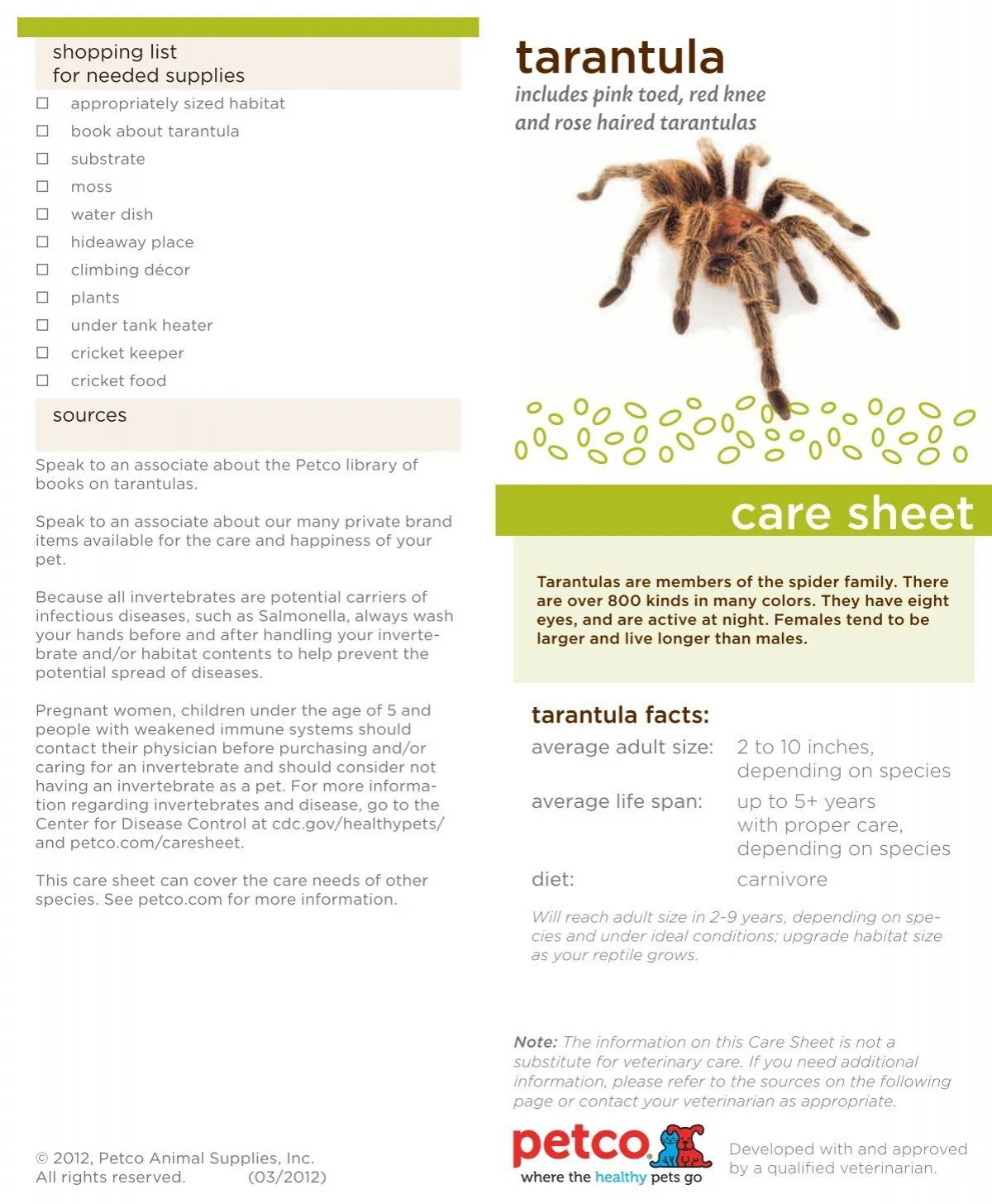
Feeding your tarantula is a straightforward but essential part of their care. Tarantulas are carnivores, and their diet should consist of insects appropriate for their size. Providing a balanced diet of live insects is key to their health and well-being. The frequency and type of food will vary depending on the species and the tarantula’s age, but understanding their dietary needs is fundamental. Also, always ensure that you provide clean water to your tarantula. Correct feeding is a critical factor, contributing to a healthy and thriving pet. Observing your tarantula’s feeding habits can also offer insight into its overall health and behavior.
Appropriate Prey Items
Choosing the right prey items is critical for your tarantula’s health. The primary prey should consist of live insects that are readily available and easy to handle. Common food sources include crickets, mealworms, dubia roaches, and superworms. The size of the prey should be appropriate for the size of your tarantula; a good rule of thumb is to offer insects that are no larger than the tarantula’s abdomen. Avoid feeding your tarantula insects that have been exposed to pesticides or chemicals. Always ensure that your prey items are gut-loaded before feeding them to your tarantula; this means providing the insects with nutritious food, so they pass those nutrients on to your pet. Variety in the diet can also be beneficial, so consider offering different types of insects. Remember, the health of your tarantula is directly related to the quality of its diet.
Feeding Frequency and Amounts
The frequency of feeding depends on the species, age, and growth rate of your tarantula. Spiderlings and juvenile tarantulas typically need to be fed more frequently than adults. Young tarantulas may need to be fed two to three times a week, while adults can usually be fed once or twice a week. Observe your tarantula’s feeding habits to determine the appropriate amount of food. A tarantula that is about to molt may refuse food, so it’s important not to force it to eat. Remove any uneaten prey items after 24 hours to prevent stress. Remember, overfeeding can lead to health problems, so err on the side of caution and provide only the amount of food your tarantula can consume without leaving leftovers.
Watering and Hydration
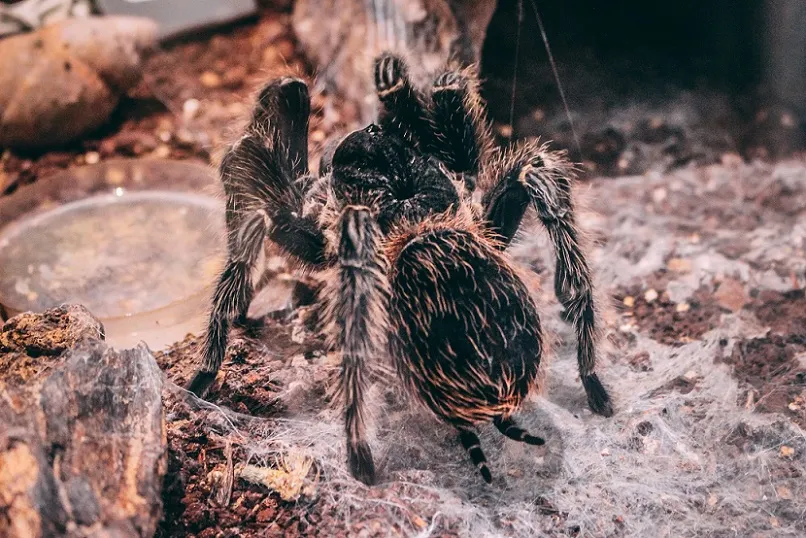
Water is essential for tarantula health and is often overlooked. Providing a clean water source is a must for tarantulas. Use a shallow water dish that is appropriate for the size of your tarantula. Ensure that the water dish is always filled with fresh, clean water. If you’re keeping a spiderling, you can use a bottle cap or a small, shallow dish to prevent it from drowning. In addition to a water dish, you can mist the enclosure occasionally to increase humidity and provide a source of water for the tarantula to drink. Regular monitoring of the water source and misting is important to ensure your tarantula stays hydrated. Dehydration is a serious health concern, so providing access to fresh water is essential.
Secret 4: Handling and Safety
Handling a tarantula should be done with caution, as their bites can be painful, and some species have urticating hairs that can cause skin irritation. Safety is paramount for both you and your tarantula. Knowing when to handle and how to do it safely will minimize the risk of injury and stress for both parties. Many experienced keepers avoid handling altogether, preferring to observe their tarantulas from a distance. Handling, while occasionally necessary, should never be forced. Understanding the risks and following safe handling techniques is important for creating a safe and enjoyable experience.
When to Handle (and When Not To)
While some tarantulas tolerate handling, others are best left alone. It’s important to know when to handle your tarantula and when not to. Avoid handling immediately after a molt, as their exoskeletons are soft and vulnerable. Do not handle a tarantula if it is stressed, defensive, or showing signs of agitation, such as raising its front legs or flicking hairs. Avoid handling during the feeding process. Even docile species can bite if they feel threatened. The best approach is to observe your tarantula’s behavior and handle it only when it is calm and appears receptive. Always prioritize the tarantula’s well-being over the desire to handle it. Observe your pet and get familiar with its behavior before deciding to handle.
Safe Handling Techniques

If you choose to handle your tarantula, do so with extreme caution. Always handle the tarantula close to the ground or a soft surface to minimize the risk of injury if it falls. Gently encourage the tarantula to walk onto your hand, rather than grabbing or forcing it. Never squeeze or apply pressure to the tarantula’s body. Avoid sudden movements that could startle the tarantula. Wash your hands thoroughly before and after handling to remove any potential irritants and prevent the spread of bacteria. Also, be aware of urticating hairs, which some tarantulas can flick at perceived threats. Avoid touching your face or eyes after handling your tarantula.
Secret 5: Health and Maintenance
Maintaining the health of your tarantula involves regular observation, proactive care, and a clean environment. Knowing how to identify common health issues and maintaining the enclosure properly is crucial for the longevity of your pet. Regular cleaning, monitoring, and responsible care will help ensure that your tarantula remains healthy and thrives in its enclosure. Providing a stimulating and safe environment is one of the most important aspects of tarantula care.
Identifying Common Health Issues
Tarantulas can suffer from various health issues, and recognizing the signs is essential for providing timely care. Common problems include parasites, mites, fungal infections, and injuries. Look for signs of illness, such as lethargy, loss of appetite, unusual behaviors, or changes in appearance. If you suspect your tarantula is ill, consult with an experienced tarantula keeper or a veterinarian with expertise in exotic animals. Inspect the enclosure regularly for any signs of parasites or mold. Early detection and treatment are key to preventing serious health complications. Observing your pet daily, and knowing what to look for, will help you maintain its health.
Cleaning and Maintaining the Enclosure
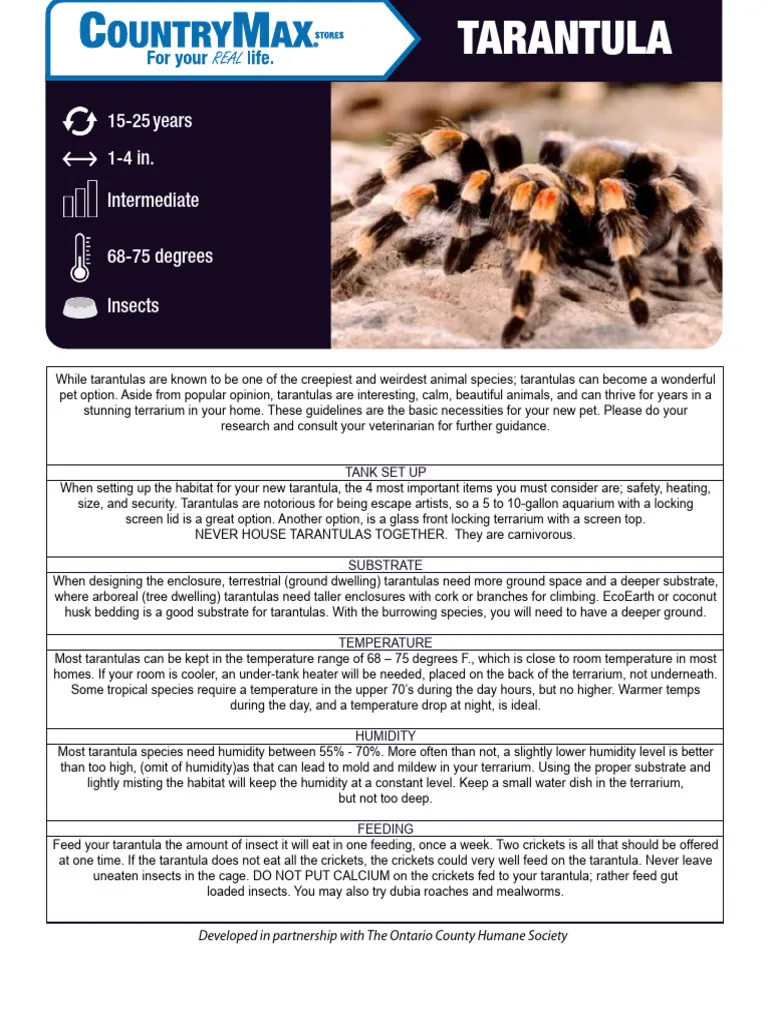
Regular cleaning and maintenance are essential for maintaining a healthy environment for your tarantula. Spot-clean the enclosure weekly, removing any uneaten prey, fecal matter, or other debris. The substrate should be replaced regularly, usually every few months, depending on the type of substrate and the size of the enclosure. When cleaning, avoid using harsh chemicals or detergents, as these can be harmful to your tarantula. Wipe down the sides of the enclosure with a damp cloth to remove any dirt or grime. Ensure proper ventilation to prevent mold growth. The cleaner the enclosure, the healthier your tarantula will be. Maintaining a clean environment is a key factor in providing the best care.
